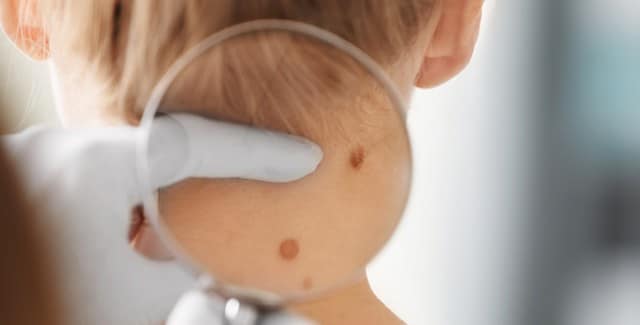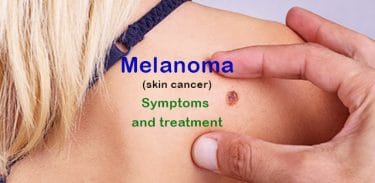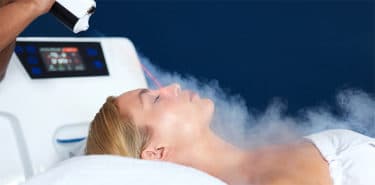Dermatology is the branch of medicine concerned with the diagnosis, treatment and follow-up of skin (hair, nails, etc.) disorders and sexually transmitted diseases. It also cares for skin to look beautiful and healthy. Dermatologist diagnoses, treats and follows up skin, hair, nail and oral diseases. He/she specializes in the protective methods as well as diagnosis and treatment of many other infectious diseases such as sexually transmitted diseases and scabies. Many diseases such as skin, hair and nail fungus, psoriasis, eczema, skin infections and Behcet’s disease also fall into the field of dermatology.
Table of Contents
What is dermatology?
Skin is the largest organ in our body. It has many functions such as protecting the body from external factors and infections, and preventing heat loss. Dermatology is a medical specialty, which concerns with the diagnosis, treatment and follow-up of skin diseases and sexually transmitted diseases, and cares for skin’s health and cosmetics. A dermatologist is the specialist who is responsible for tending to the diseases that fall in the field of dermatology.
Dermatological diseases
- Skin diseases: Psoriasis, vitiligo, lichen planus, eczema, acne, warts, moles, fungal infections, urticaria (hives), scabies
- Hair diseases: Hair loss, hair lice, fungal infections
- Nail diseases: Nail fungus, nail ingestion, nail distortions
- Oral mucosal diseases: Oral aphthae, tongue sores
- Skin infections: Cellulite, fruncle, carbuncle, impetigo
- Skin cancers
- Behcet’s disease
- Sexually transmitted diseases: Syphilis, genital herpes, genital warts (HPV), gonorrhea
Important skin diseases
All skin diseases are important, because they can progress very quickly if they are not treated, and can significantly affect the patient’s daily life. Problems caused by dermatological diseases when not treated:
- Fungal, parasitic and bacterial diseases are very common in the community, and must be treated urgently because they are contagious.
- Few diseases such as psoriasis, vitiligo, lichen planus may be the signs of systemic diseases in some cases. They should be closely monitored. They may also pose a cosmetic problem for the patient.
- Sexually transmitted diseases can quickly spread if precautions are not taken or ways of protection are not known.
- Anaphylaxis is an obstruction of the airways, which develops suddenly after a contact with any allergen. Anaphylaxis is an emergency that can cause death.
Dermatology areas
It deals with all the hereditary or acquired diseases related to skin and skin appendages (hair and nail).
- Dermatooncology: It deals with skin cancers.
- Dermatocosmetology: Botox, collagen applications etc.
- Dermatoallergy: It deals with allergic diseases.
- Dermatopathology: It deals with the samples taken in order to reach the definitive diagnosis of most skin diseases.
- Occupational dermatoses: It deals with occupational skin diseases.
Symptoms of dermatological diseases
- Itching
- Redness
- Burning, tingling
- Skin cracking or skin dryness
- Heat increase
- Skin rash
- Inflammation (purulence)
- Color change in the affected area of the skin
- Hard, swollen skin
- Hair loss, dandruff
- Skin blemishes
In addition, if there are skin diseases with infection or some systemic involvement, symptoms concerning the whole body such as joint pain, swelling in lymph nodes, fever, and weakness may occur.
Dermatology tests
Dermatologists usually diagnose the vast majority of diseases with the help of a good medical history and physical examination. Different tests may be needed for the definitive diagnosis and differential diagnosis of some diseases.
- Blood tests: In the case of infection, tests such as CRP, complete blood count showing infection values are carried out. In allergy, the measurement of rising specific IgE in the blood can be done.
- Allergy tests: Many allergic diseases can be diagnosed with the help of a good physical examination and medical history. However, with allergy tests, the disease is confirmed and the cause of the allergy can be found, which contributes to the treatment. Skin prick test (on skin surface), intradermal test (in-skin) and patch tests are the tests performed by dermatologists for this purpose.
- Skin biopsy: It is the process of taking a tissue sample from the area which is thought to be diseased that is sent to the pathology department in order to be able to make certain diagnosis of some diseases.
- Pathergy test: It is used to diagnose Behcet’s disease. A sterile needle with a thick tip is pricked in the surface area of the forearm. The result of the test is evaluated according to the lesions developed after 24-48 hours.
- Microscopic investigations: Some diseases such as fungal infections may need to be diagnosed by investigating under microscope.
- Autologous serum test: It is done to show the presence of autoantibody or histamine-releasing factors in patients with chronic urticaria.
- WOOD light: Some images that are normally not visible to the naked eye are rendered visible using their fluorescent feature. It is used most frequently in infectious diseases and pigmentation disorders.
Who is a Dermatologist?
Dermatologists diagnose and treat any disease related to skin, hair and nail, sexually transmitted diseases, intraoral and tongue diseases.
How to become a dermatologist?
After completing the specialty training after the general training, the physicians can work as a dermatologist.
Treatment methods of skin diseases
- Drug treatment: Ointment or creams spread on the skin are used for many diseases. In some cases, antifungal (fungicides), antibiotics (bactericidal drugs), antiparasitic (parasitic drugs) and steroids are administered orally. Sometimes drugs can be applied into the lesion by injection.
- Cryotherapy: The effect of substances such as liquid nitrogen, which are applied through appropriate equipment, is utilized by creating cold damage in the tissue. It is used in the treatment of benign and malignant lesions. It may have side effects such as edema, throbbing pain, bleeding, infection.
- Phototherapy: It is a treatment in which Ultraviolet B method is used. It is used in the treatment of diseases such as psoriasis and vitiligo. After application, side effects such as redness, burn, nausea and itching may occur.
Skin surgeries
- Electrosurgery: The electrical energy is transferred to the tissue by suitable devices and does effect by creating heat damage in the tissue. There are many different procedures that can be done in the electrosurgical field. There may be side effects such as bleeding, pale-colored scars, burning, infection.
When should I go to the dermatologist?
- In case of scar, trace or discomfort occurring in skin, hair, nail and mouth
- When there are signs of Behcet’s disease and skin involvement of some systemic diseases
- In case of wart, scar, redness and stiffness in sexual area or groin
- When many cosmetic processes such as laser hair removal, botox and filling are needed
- In case of hair loss or thinning
Dermatology and skin care
Dermatology is not only concerned with skin diseases. At the same time, it informs about and carries out methods to be applied in order for the skin to be healthy and beautiful.
Beauty tips for skin
- Skin should be cleaned regularly with appropriate method. Since long-term contact with water and soap may cause the loss of the natural protective layer of the skin and dryness, odorless and colorless cleaners suitable for skin’s Ph value should be used.
- Hands should be washed with warm water instead of cold or hot water.
- Skin should be moistened frequently. Moisturizing cream or pomades should be used for this purpose.
- Protective creams should be used in order to protect from sun’s aging effect on skin.
- Fast food should be avoided.
Dermatology and cosmetic surgery
Dermatology deals with medically necessary cosmetic procedures to protect and improve the health and beauty of skin as well as skin diseases. Many procedures, including cosmetic surgery, have been introduced in the form of interventional medical treatment instead of open surgical methods. Therefore, relationship between dermatology and cosmetic surgery continues to increase.
Cosmetic surgery areas
- PRP and mesotherapy applications: Hair loss and restoration
- Laser applications: Skin rejuvenation and wrinkle prevention, acne, falchata, reduction of traces of surgery, removal of facial rashes, local slimming procedures, tattoo removal, removal of congenital body color disorders
- Botox applications: Wrinkle treatment and excessive sweating treatment
- Filling applications: aesthetic applications such as nose aesthetics
- Face and eyebrow lifting operations
Are dermatological diseases fatal?
Allergic reactions that begin all of a sudden and require sudden intervention and anaphylactic shock can cause death if not rapidly intervened. Skin cancers that are not diagnosed or treated early can also be fatal. The mortality rate in other dermatological diseases is very low with appropriate treatment plan.
Prevention of skin diseases
- To protect yourself from infectious diseases such as fungi, do not share your private items with others. Dry well the curved areas of the body after washing.
- Disinfect common pools frequently.
- To protect from skin cancers, do not stay under the sun, especially at noon.
- Use sunscreen creams with at least a UV protection factor of 30.
- Stay away from substances that you are allergic to.
- It is important to use condoms to protect against sexually transmitted diseases. However, it should be known that this method is not 100% fullproof.
References: 1- Skin Diseases, 2- List of Skin Diseases, 3- Skin Conditions




